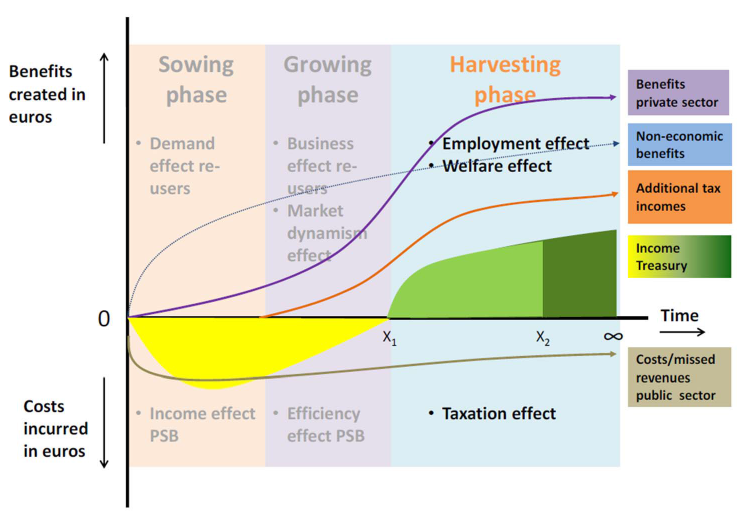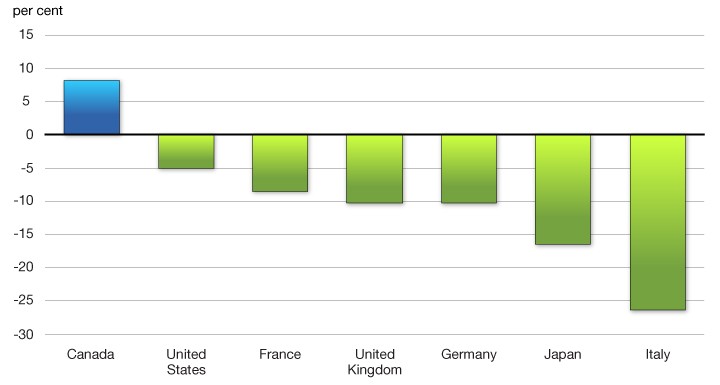The Essential Eight The Only Economic Indicators Investors Need to Know
Post on: 26 Апрель, 2015 No Comment

display>
Housing starts. PPI. Same-store sales. Weekly jobless claims. Philly Fed. Lagging indicators. Core CPI. Industrial production.
When it comes to economic indicators. the list is almost endless. One economic indicator follows another, filling an entire calendar weekly, monthly, quarterly, annually. But on the specific day an indicator is announced, it seems to be the biggest deal going: Commentators comment, pundits pontificate, analysts and economics analyze, predict and forecast, and financial markets around the world react often violently.
The next day brings a new batch of indicator reports. Yesterday is forgotten as the frenetic cycle plays itself out all over again.
Given this pattern, it’s not surprising that the economic-indicator game seems confusing and perhaps even pointless. In the eyes of many investors, the only thing these indicators seem to indicate about the economy is that it can be highly confusing and extremely difficult to predict.
What do they all mean and which indicators are truly important? To get some answers, we went directly to Money Morning Contributing Editor Martin Hutchinson. a veteran banker, investor and author whose many roles have given him a ringside seat to the entire economic-indicator gambit. Hutchinson believes there’s a tidbit or two of useful information in nearly all of the regular economic reports both government and private. However, he classifies only a few as truly important and even then, the significance depends on your particular perspective as an investor.
As noted, there are dozens of individual economic indicators. But each of them generally has three primary attributes:
- Its Relationship to the Business Cycle : The indicator can be pro-cyclic, meaning it moves in tandem with the overall economy; counter-cyclic, meaning it moves opposite the economy; or acyclic , meaning its changes are random with respect to the overall economy, and thus have little or no relevance to future prospects.
- Its Frequency : Some indicators, such as the direction of the stock market, change constantly and can be read at any time, while others, like initial jobless claims, are reported weekly. However, most of the major indicators overall unemployment, inflation and retail sales, for example are tracked monthly. And really big picture indicators, like the government’s Gross Domestic Product (GDP) statistics, are tallied quarterly and then summarized annually.
- Its Timing Relative to Overall Economic Activity : The timing value of various indicators can be classified in three ways. Leading indicators are the most important, because they tend to move ahead of the overall economy, providing investors with clues about what’s coming next. The performance of the stock market is considered a leading indicator, since stock prices tend to rally before the general economy turns up; conversely, share prices tend to fall, perhaps even into a bear market, in advance of an economic downturn. Lagging indicators, by contrast, don’t change directions until after the general economy turns, while coincident indicators tend to move in tandem with changes in the overall economy.
In most cases, the true predictive value of any specific indicator comes not from a single reading, but from the progression of numbers it posts over time, thereby establishing trends and making key turning points easier to recognize and act on. In many other cases, the actual importance of a given indicator only becomes apparent in its relationship with other economic factors.
In singling out his favorite indicators, Hutchinson places particular emphasis on trends, noting that progressive analysis of major economic conditions is the key to recognizing long-term investment opportunities.
According to Hutchinson, eight indicators stand out above the noise created by the steady onslaught of business and market statistics that fill the daily newscasts and financial press. These essential eight are the indicators every investor needs to understand and watch if they want to be successful.
Any analysis should be top down , using the economic health of markets and economies throughout the world as the starting point. From there an investor can drill down and start looking at specific markets, sectors and companies throughout the increasingly intertwined global economy.
The eight essential indicators Hutchinson favors are:
1. Long-Term Growth in National Productivity : As U.S. and European investors increasingly turn to the international markets in search of investment opportunities, hype can often overwhelm basic economics. Some countries gain fad or even superstar status, leading to overvaluations among individual securities and setting investors up for losses when the crowd decides to pull out and move on. Hutchinson says you can avoid this trap by reviewing the long-term productivity growth within any country you’re considering.
If a country has a high and prolonged rate of productivity growth, then its securities are worth the high P/E (Price/Earnings ) ratios they’re usually accorded, he explains. But if productivity growth is very low or negative as is the case with Mexico or Venezuela then investments in those countries should be avoided. They’re not creating value.
The best source for tracking productivity figures for various countries and for finding a number of the other indicators listed below is The Conference Board ‘s Total Economy Database, which can be accessed at the organization’s Web site.
2. The Inflation Rate Compared to Short-Term Interest Rates : This is an excellent example of a situation in which the sum of the parts is worth more than the individual indicators by themselves. Take inflation rates. A high inflation rate isn’t exactly desirable. But neither is it enough of a reason on its own to avoid a particular economy.
However, if inflation rates are higher than short-term market rates in other words, giving us negative real interest rates then that’s a major red flag. A downturn is likely on the horizon, meaning you should take protective measures (such as hedging positions with put options or by purchasing inverse funds), and evaluate any new investments in that market with extra caution.
3. Trends in the Balance-of-Payment and International-Debt Levels : When a country has a growing deficit in its international balance of payments (BOP), it can be a real harbinger of negative events from increased foreign debt and growing foreign ownership of domestic assets to higher interest rates and a weaker currency. When investing overseas, it’s best to look for countries with a positive balance of payments (such as China) or at least a shrinking deficit. The United States right now has the world’s worst BOP deficit, so a slowing of the rate of increase would be considered a positive domestic sign.

4. Trends in the Domestic Budget Balance and Levels of Public Debt : Higher deficits and greater government debt usually translate into higher taxes, higher interest rates, inflation and less money available to finance real growth and increased productivity. Again, the most-positive readings would show a shrinking deficit and falling debt levels or, at the very least, a slowing in the rate of increase.
5. Government Spending as a Percentage of Gross Domestic Product (GDP) : If the government is spending at a rate in excess of the nation’s level of productivity, then the economy is not sufficiently healthy to generate growth which, of course, is the key to rising stock prices and investment values. Thus, a high or rapidly rising level of government spending relative to GDP is considered a very bad sign for the future of both the economy and the associated financial markets.
6. Actual GDP Growth : A healthy economy is a growing economy. As such, any increase in the rate of real GDP growth is considered positive, while a slowing in the growth rate or, worse still, an actual decline in GDP is a negative.
7. Consumer Sentiment : There are several measures of consumer sentiment, but one of the most popular is the Thomson Reuters /University of Michigan Survey of Consumer Sentiment. which comes out monthly and is widely reported in both the financial and popular media. Rising sentiment is good because it usually means more of the public is employed, optimistic about the future, and therefore more willing to spend and invest all of which is an economic plus. Falling sentiment means people are more cautious, less willing to take risks and more concerned about the future which can turn into a self-fulfilling prophecy, triggering an economic slowdown.
8. The Savings Rate : Simply put, the higher the savings rate, the better the outlook is for the long haul. More savings means there will be more money available for consumption and investment in the future, both of which tend to provide an overall economic boost.
Obviously, all of these indicators are subject to interpretation (that’s why they’re called indicators, rather than absolutes). The economy can also be a very contrary creature, often defying both logic and reason. However, the more of these indicators you find showing positive (or negative) readings, the greater the odds you’ll be correct when making your own personal economic and investment decisions.
[Editor’s Note. As the preceding story demonstrates, Martin Hutchinson has an unrivaled understanding of the world’s financial markets. And he has terrific foresight. Hutchinson warned investors about the dangers of credit-default swaps — half a year before those deadly derivatives ignited the worldwide financial firestorm. He even predicted where and when the U.S. stock market would bottom (a feat that won him substantial public recognition ).
During the stock-market rebound that started in mid-March, Hutchinson’s calls on gold, commodities and high-yielding dividend stocks made winners of investors who took his advice.
Hutchinson is now making those insights available to individual investors. His trading service, The Permanent Wealth Investor , combines high-yielding dividend stocks. gold and specially designated Alpha-Bulldog stocks into winning portfolios.
And keep an eye out for Hutchinson’s new book, Alchemists of Loss, which details how the market theories of Nobel laureates and other top experts led to the greatest financial crash in world history. The book is tentatively slated for a late May/early June release.]
News and Related Story Links :
- Money Morning Commentary:
How Banks Are Crowding Out the U.S. Rebound .
Official Web Site .














